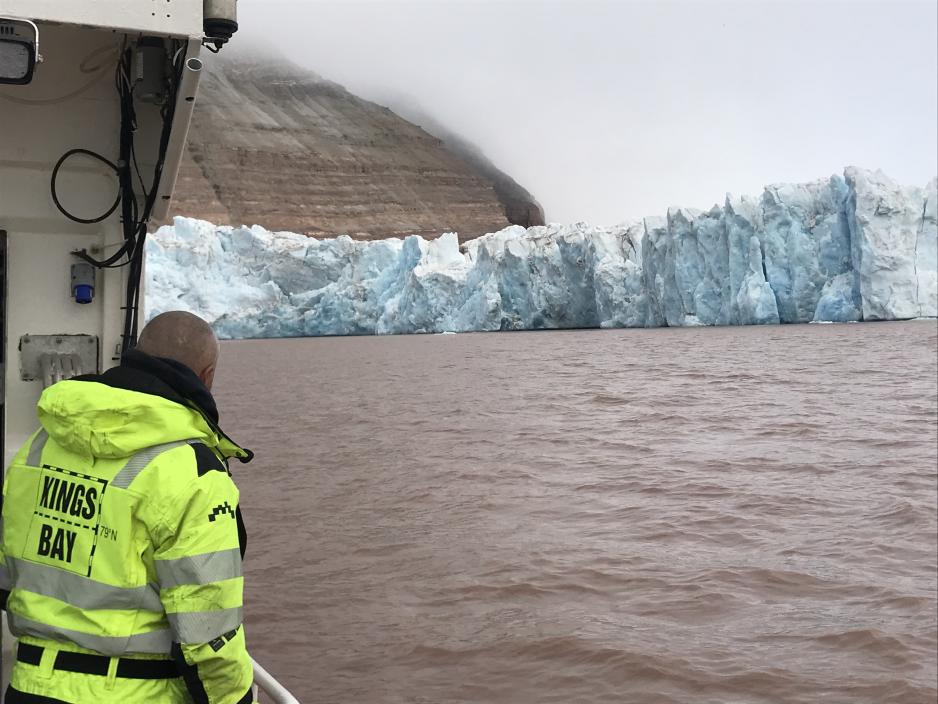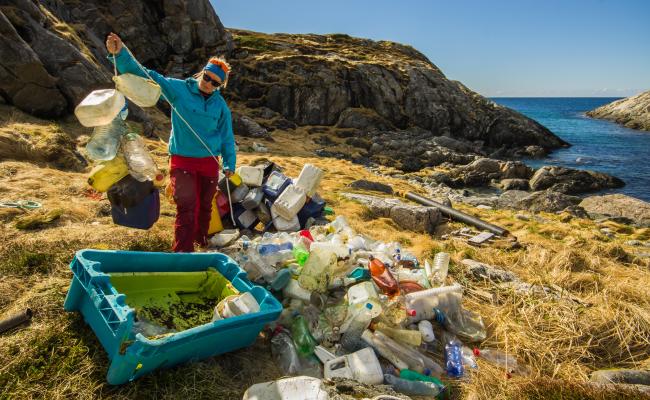Op-ed: Svalbard Tourism Management and Policy Gaps

At the glacier front of Kronebreen in Kongsfjorden at Ny-Ålesund in Svalbard. (Photo: Fjordic Freshwater Fluxes)
A recent review of Svalbard tourism regulations reveals gaps and conflicting interests.
The tourism industry is not new on Svalbard, having been an attractive cruise destination since the end of the 19th century. Yet, the strategic development of the tourism industry on land started in the 1970-80s after the opening of the Longyearbyen airport and the restructuring of the cornerstone coal company Store Norske.
Since then, Svalbard has experienced a rapid increase in the number of tourists both on land and at sea. Last year the number of guess nights reached nearly 148 000, a bit lower compared to the record year of 2019, but still almost five times higher than the early 1990s. Also, the number of cruise passengers has increased rapidly.
A Balancing Act?
Tourism development offers multiple socio-economic opportunities such as local infrastructure development, employment opportunities and a source of income for communities. However, unlike mainland Norway, nature conservation in Svalbard is usually prioritized over commercial interests and activities such as tourism.
The Norwegian government ambition is to make the archipelago the best-managed wilderness area in the Arctic. This means that wilderness protection will likely trump commercial activities such as organized tourism. Today, 65% of Svalbard’s land area and 87% of its territorial waters are protected.The number and diversity of policies, rules, and regulations that pertain to tourism activities is formidable. Moreover, foreign tourism operators may struggle to understand the existing laws and regulations largely written in Norwegian, with only a few translated into English.
The regulations intend to control the flow of visitors.
Contradictions in regulations
Our newly published study has mapped and reviewed tourism related regulations. The study points to the potential conflicts between the policy goals of increased tourism and strict environmental regulations.
The Norwegian government both encourages tourism and restricts it through environmental concerns, access to areas and passage, requirements for organized outdoor activities, and other regulatory tools. The regulations intend to control the flow of visitors, but at the same time they create uncertainties for the tourism industry.
Our analysis reveals four regulatory gaps that warrant scrutiny.
The first pertains to knowledge-based management. The Svalbard Environmental Protection Act’s use of the precautionary principle calls into question whether the regulations are informed by or based on expert and scientific knowledge. The social acceptance of regulations is likely weakened if such knowledge is not included in nature management.
The second relates to the differential regulatory treatment of the local population and visitors. This is particularly evident in terms of area access and modes of travel and may be difficult to justify due to the dynamic population change. Currently, being designated “local” is solely based on a period of residency (quite short) which says nothing about the person’s skills, capability, or relevant experience in the outdoors activities.
Also read
The third is grounded in environmental monitoring programs that would benefit from being linked more strongly to tourism activities. This could increase knowledge about changes in the environment and the impact of tourism activities. Finally, the fourth pertains to the regulations for organized outdoor activities. This includes the eight-week reporting period before activities can commence, which is likely to limit the planning and flexibility of tourism activities, especially given the rapidly changing sea ice and weather conditions.
Action space for tourism
The current regulations and practices impact the action space for tourism. In September 2021, the Norwegian government opened a broad hearing process of suggested amendments to the SEPA and associated regulations. The proposed changes will limit the geographical area and types of tourism products and activities available in the archipelago.
The process lead to strong reactions among Longyearbyen business operators, the local population, and others. The public’s and tourism stakeholders’ feedback on these changes may indicate a stronger need for predictability and justify greater national control of the archipelago and its international community.
Examining the window of opportunity and action space for tourism stakeholders becomes increasingly relevant. Defining the action space for future tourism in Svalbard will require stakeholders to assess the opportunities and limitations of the regulatory framework, evaluate market dynamics, and negotiate decisions about desirable tourism segments and products in the Svalbard context.





